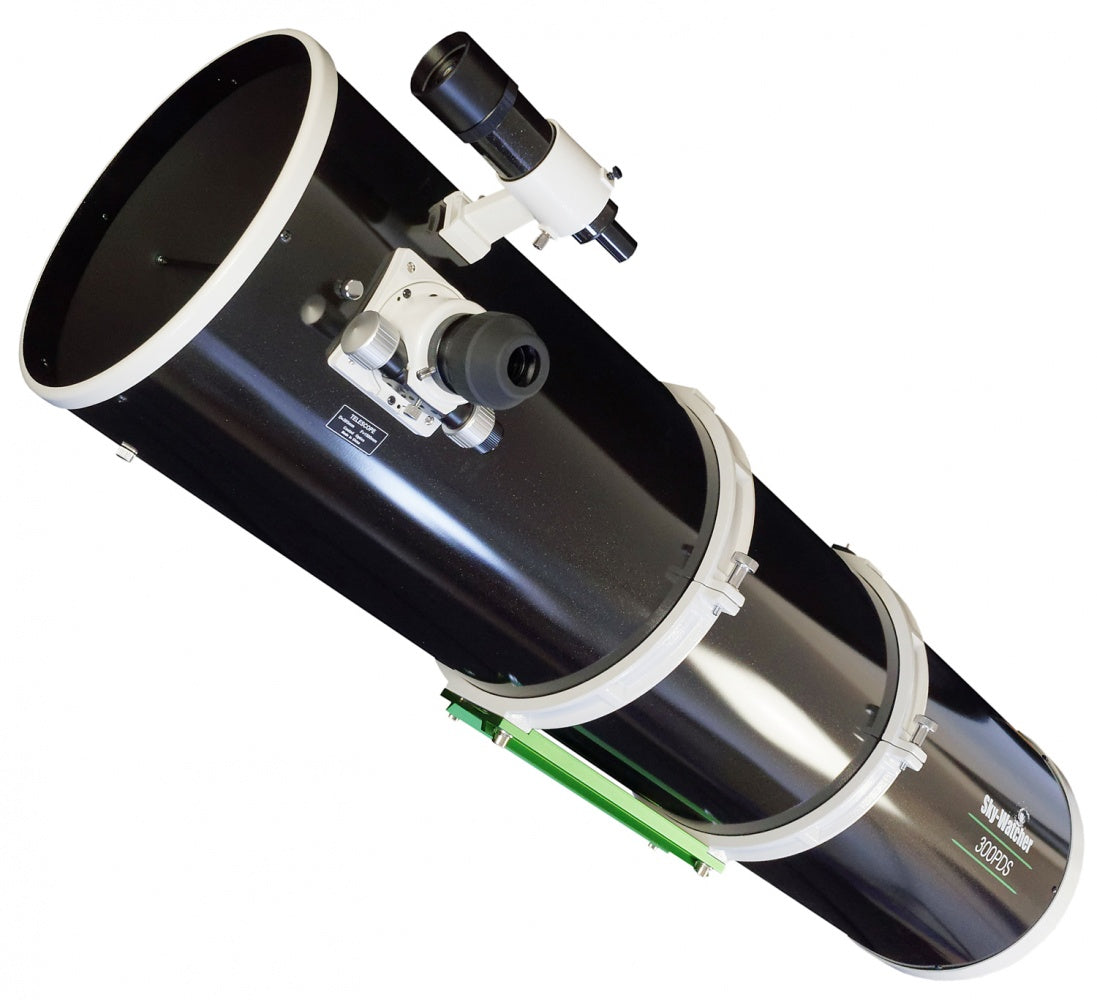Product Description
Skywatcher Explorer 300PDS Optical Tube Assembly – High-Performance Newtonian Reflector Telescope
The Skywatcher Explorer 300PDS Optical Tube Assembly is a high-quality Newtonian reflector designed for serious astronomers and astrophotographers. With an impressive 305mm primary mirror and a focal length of 1500mm (f/4.9), this telescope is perfect for viewing and photographing deep-sky objects such as galaxies, nebulae, and star clusters with stunning detail.
Key Features & Benefits
- Large 305mm Aperture: The 300PDS offers 44% more light-gathering capacity than 250mm models, allowing for bright, high-contrast views of faint deep-sky objects, making it ideal for advanced stargazing and astrophotography.
- High-Quality Parabolic Primary Mirror: The parabolic design reduces optical aberrations, delivering sharp and clear images across the entire field of view.
- Dual-Speed 10:1 Crayford Focuser: The included 1.25"/2" dual-speed Crayford focuser with a 10:1 ratio provides smooth, precise focusing, essential for both visual observation and photography.
- Optimised for Prime-Focus Photography: The slightly shortened tube design improves performance for prime-focus photography, making this model well-suited for capturing images of celestial objects.
- RAQ Mirror Coating: Both the primary and secondary mirrors are coated with Radiant Aluminium Quartz (RAQ), providing up to 94% reflectivity for enhanced brightness and long-term durability.
- Ultra-Thin Secondary Mirror Supports: The 0.5mm secondary mirror supports minimise diffraction spikes, contributing to clearer, crisper images.
Specifications
- Aperture: 305mm
- Focal Length: 1500mm (f/4.9)
- Magnifications (with supplied eyepiece): x53.5
- Highest Practical Power: x610
- Eyepiece Supplied: 28mm LET (2"/50.8mm)
- Finderscope: 9x50
- Focuser: 1.25"/2" Dual-Speed 10:1 Crayford
- Mounting Accessories: Tube rings and Losmandy-type dovetail bar
The Skywatcher Explorer 300PDS Optical Tube Assembly offers premium performance for seasoned astronomers and provides the precision and capacity needed for serious astrophotography. Its advanced optical design and high-reflectivity coating make it an exceptional choice for deep-sky observation and imaging.
| Focal length | 1500 mm |
| Computer database objects | 42 900 Objects |
| Focuser |
2" Crayford focuser with 1:10 microfocusing
|
| Connection to eyepiece | 1 1/4" , 2" |
| Payload max. (depending on using and demand) | 20 KG |
| Aperture | 305 mm |
| Type of telescope |
Newtonian (with parabolic Mirror)
|
| GOTO | Synscan |
| Type of mount | EQ6 PRO Synscan |
| Viewfinder | 9 x 50 |
| Weight of mount | 34 KG |
| GOTO | Yes |
| Focal ratio | f/ 4.9 |
| Tube weight | 25 Kg |
| Secondary mirror support |
0.5 mm ultra thin mirror supports
|
| Designation | equatorial |
| Max. useful visual power | 610 x |
| Eyepieces | 28mm 2" LET |
Payment & Security
Your payment information is processed securely. We do not store credit card details nor have access to your credit card information.




















